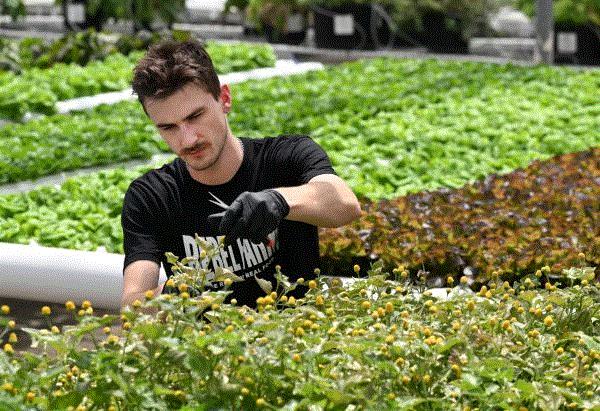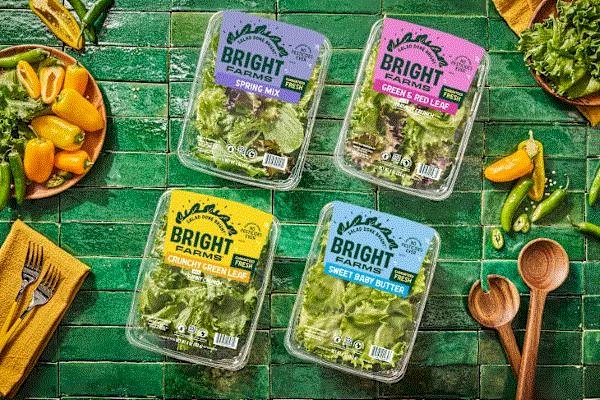You Can Enter the CEAs Now!
By Jen P.
Are you proud of your accomplishments as a CEA producer or an innovative company with an impactful new product? Enter the Cultivating Excellence Awards (CEAs) today for the chance to be nationally recognized at this year’s Indoor Ag-Con. These awards, from Inside Grower and Indoor Ag-Con, recognize commercial growers who stand out and excel in the industry, and innovative products that can be game changers.
We choose three finalists for each of our awards: Operational Excellence, Good Stewardship and Product Innovation. Each of the finalists will receive one All-Access Pass to Indoor Ag-Con 2026, where they will be able to participate in a two-day lineup of education, networking and one of the industry’s largest trade shows.

Of those finalists, our panels of expert judges will choose a winner in each category, which we announce during the prestigious CEAs Gala Awards Luncheon at Indoor Ag-Con. This year the show runs February 11-12, 2026 at the Westgate in Las Vegas. The winners will be featured in upcoming issues of Inside Grower magazine.
Click here to enter the awards, and don’t delay—the deadline is October 1!

From Commutes to Cogeneration
Irony is one of my favorite things, though as a fan of British entertainment, I sometimes feel it’s underappreciated in the U.S. On my morning commute, I often watch the highway traffic and wonder at its absurdity. Some people headed east, others west, all of us burning time and fuel to cross paths. Wouldn’t it be simpler if we just traded houses or jobs and spared ourselves the commute?
So what does any of this have to do with indoor vegetable production? Quite a bit, actually. Today I want to talk about cogeneration, co-location and the missed opportunities when industries throw away resources we could be putting to use.

A cactus of mine, stabbed by it's own thorn.
The idea isn’t new. Cogeneration systems, for example, often rely on natural gas generators that not only produce electricity but also send waste heat and CO₂ into greenhouses. These systems usually require scale to make sense, but the principle goes beyond self-owned equipment. There are plenty of opportunities for industries outside of CEA to share infrastructure like this, benefiting both indoor agriculture and their neighbors.

Data Centers Colocation with Greenhouses
At my greenhouse at CSU Spur, and across the Spur campus, we get our building heat from the next-door Central Utility Plant, or CUP. Before Spur existed, Denver’s wastewater had to be cooled before discharging into the Platte River, to avoid warming the naturally cold Rocky Mountain water and disrupting ecosystems. Today, that same heat is captured and pumped into the buildings and greenhouse, saving both water and energy that would have otherwise gone into cooling. In other words: if you flush in Denver, you’re helping heat my greenhouse.
And it’s not just wastewater. In the age of A.I., data centers are so hot right now. The Resource Innovation Institute recently published a feasibility report exploring how Virginia’s data centers could be paired with controlled environment agriculture. This colocation model isn’t hypothetical, it’s already working in the Netherlands. Data centers don’t just generate heat, electricity and CO₂; they also attract people and build communities that can support indoor agriculture alongside them.
Check out RII’s report here.

Site Feasibility Tool
It’s exciting to see data centers paired with CEA operations in Virginia, but the bigger question is: how does this model compare across the rest of the country? Factors like zoning regulations, consumer demand, environmental conditions, and energy access all shape where colocation can succeed.

Sample Image of RII's Site Feasibility Tool
To dig into these variables, the Resource Innovation Institute is hosting a webinar today, Wednesday, September 17 at 1 p.m. EST to showcase their new Free Site Feasibility Tool for CEA. This GIS-based platform layers multiple data points, everything from energy infrastructure to market access, to help identify the most promising locations for greenhouses and accelerate smarter decision-making.
Sign up for the webinar here!
Herb Tariffs
Another development worth watching is the discussion around tariffs on herbs, and possible exemptions. While most of the potentially exempted products (tea, cinnamon, gum arabic) aren’t typical vegetable CEA crops, changes here could ripple into the greenhouse industry.
If import prices rise, certain herbs could cross an economic threshold where indoor production suddenly makes sense. Starter plants may also be affected, depending on how the ruling is applied. For now, the language and product lists remain vague, so uncertainty is the theme. You can explore the details of the ruling HERE.
Greenhouse and Spirits Buzz
In the vein of interesting herbs, close to home for me is a greenhouse, crop and grower making a buzz in local news. Spirit distiller, Tingala, produces a unique spirit with spilanthes, otherwise known as buzz buttons. These unique flowers produce a tingling, numbing sensation when chewed, or infused into drinks.
While Tingala once sourced from farms in California, they’ve now partnered with Rebel Farms, a Denver hydroponic greenhouse best known for leafy greens. Early harvests yielded about five pounds of flowers per week, but production is expected to quadruple over the next year as demand for the spirit grows.
As tariffs reshape global herb markets and interest in specialty herbs and edible flowers expands, CEA vegetable operations are finding opportunities to dedicate part of their production to this niche but fast-rising market.
Read more about the partnership between Tingala and Rebel Farms here.

Will Gongos, head grower of Rebel Farms, attending to the crop. Photo by Helen H. Richardson/The Denver Post
BrightFarms in the Kitchn
If you’ve ever toured the California Spring Trials, you’ve seen firsthand how much the fashion and design world shapes greenhouse production. Each year, colors, styles and landscaping trends set the tone for the floriculture industry.
In a similar spirit, it was great to see BrightFarms featured in The Kitchn, a leading independent food site known for recipes and cooking. The article showcased BrightFarms’ leafy greens as a superior salad base, emphasizing the pristine quality and freshness that greenhouse-grown produce delivers. Packaging also got a nod, an often overlooked but essential piece in catching customers’ attention.

Photo from BrightFarms
While BrightFarms was the focus, the bigger win is for the entire CEA industry. Every time greenhouse produce is highlighted for its quality, it builds consumer recognition and drives demand, not just for one brand, but for growers across the board.
See the article here from The Kitchn.

Dr. Jake Holley
Editor-at-Large
Inside Grower
This email received by 34,453 loyal readers!
Interested in advertising in Inside Grower? Contact Paul Black or Kim Brown and they'll show you how easy, effective and affordable it is.